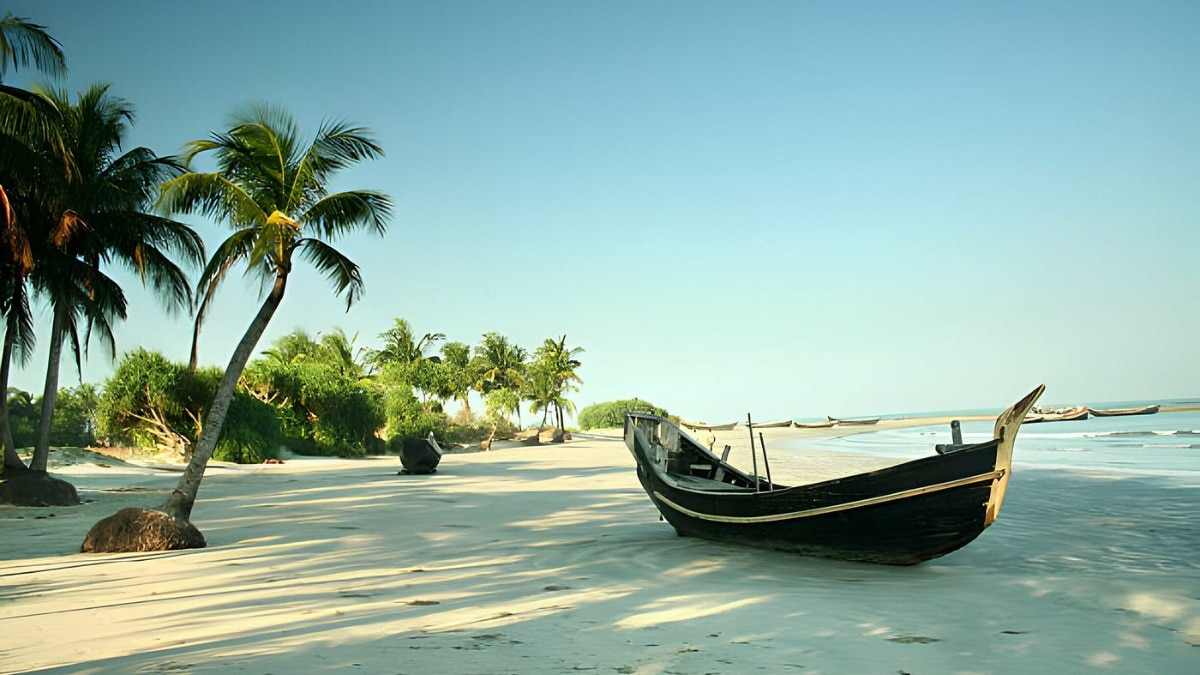St. Martin’s Island could look a nondescript piece of land, nestled in the northeastern reaches of the Bay of Bengal. But this little piece of land has recently garnered significant attention following the political upheaval in Bangladesh, which led to the fall of the Sheikh Hasina-led government.
According to reports, Hasina suggested that the United States played a role in her ouster, allegedly due to her refusal to cede control of St. Martin’s Island to the US. Although this accusation was reportedly part of a speech that Hasina never delivered, her son, Sajeeb Wazed, has since denied that she made any such claims before fleeing Dhaka on August 5 amid widespread protests which led the fall of her government.

Notably, this is not the first time Hasina has made such allegations. Ahead of the upcoming January elections in Bangladesh, she claimed that “a white man” had offered her a seamless return to power in exchange for granting an airbase. Known locally as Narikel Jinjira, due to its abundance of coconut trees, or Daruchini Dwip, St.
Martin’s Island is a unique and ecologically sensitive area, being Bangladesh’s only coral island. Spanning approximately 3 square kilometers, this small but strategically important landmass lies about 9 kilometers south of the Cox’s Bazar-Teknaf peninsula's tip. Despite its modest size, the island is renowned for its rich biodiversity, including vibrant coral reefs, diverse marine life, and rare bird species, making it a crucial ecological zone within the Bay of Bengal.
The island supports a population of around 3,800 residents, primarily fishermen and farmers. The local economy revolves around traditional activities such as fishing, rice cultivation, coconut farming, and seaweed harvesting. The dried seaweed is exported to Myanmar, adding a modest boost to the island’s economy.
In recent years, the island has also become a popular tourist destination, attracting visitors with its natural beauty and relatively untouched marine environment. St. Martin’s Island has a storied history marked by territorial changes and disputes.
After the Partition of British India in 1947, the island came under Pakistani control. It was later integrated into Bangladesh following the 1971 Liberation War. Situated just 8 kilometers from Myanmar, the island’s proximity to the Myanmar coast has led to long-standing territorial disputes between the two nations, particularly regarding maritime boundaries and fishing rights in the surrounding waters.
Despite a 1974 agreement between Bangladesh and Myanmar affirming the island’s status as Bangladeshi territory, these disputes have occasionally flared up. Adding to its complex history, recent allegations suggest that the Bangladesh Nationalist Party (BNP), led by former Prime Minister Khaleda Zia, had considered selling the island to the United States for the establishment of a military base in exchange for electoral support. This claim has further complicated the island’s already contentious status.
St. Martin’s Island has been a focal point in Bangladesh’s political landscape, largely due to its strategic location near the Bay of Bengal and its proximity to the maritime boundary with Myanmar. The island’s closeness to the Strait of Malacca, one of the world’s most crucial maritime chokepoints, amplifies its strategic importance, making it a potential asset for any country looking to establish a military presence in the region.
Rumours have long circulated that the US is interested in establishing an airbase on St. Martin’s Island. Control over this small island would provide the US with a strategic vantage point over vital shipping lanes, allowing for enhanced surveillance and influence in the region.
Despite these persistent rumours, Washington has officially denied any such plans. In 2003, then-US envoy to Bangladesh, Mary Ann Peters, categorically stated that the US had “no plans, no requirement, and no desire for a military base on St. Martin’s Island, Chittagong, or anywhere else in Bangladesh.
” Nevertheless, the strategic importance of St. Martin’s Island remains a point of interest. According to reports, the island could serve as a critical monitoring site for activities around the Cox’s Bazar port in Bangladesh, which is being developed by China as part of its Belt and Road Initiative (BRI).
This would allow for a sophisticated listening post capable of monitoring not only China’s and Myanmar’s movements but also India’s, making it a key strategic asset in the broader regional dynamics. The allegations made by Hasina bring to light the broader geopolitical tensions in the Indian Ocean region, particularly in relation to China’s expanding influence under its Belt and Road Initiative (BRI). China’s BRI is seen by India as a direct challenge to its regional dominance, especially since the initiative involves the construction of military bases and economic corridors that pass through areas like Pakistan-Occupied Kashmir (PoK), which India considers its own territory.
Bangladesh’s involvement in the BRI has raised concerns in Washington, prompting the US to bolster its own Indo-Pacific strategy, with India as a key partner. The US and India have responded to China’s rise in the region by strengthening their strategic alliances, including through mechanisms like the Quadrilateral Security Dialogue (QUAD) and joint military exercises such as the Malabar naval drills. In this context, St.
Martin’s Island is not merely a small, isolated coral outpost; it is a strategically significant piece of territory in the Bay of Bengal, where the interests of regional and global powers intersect..



















